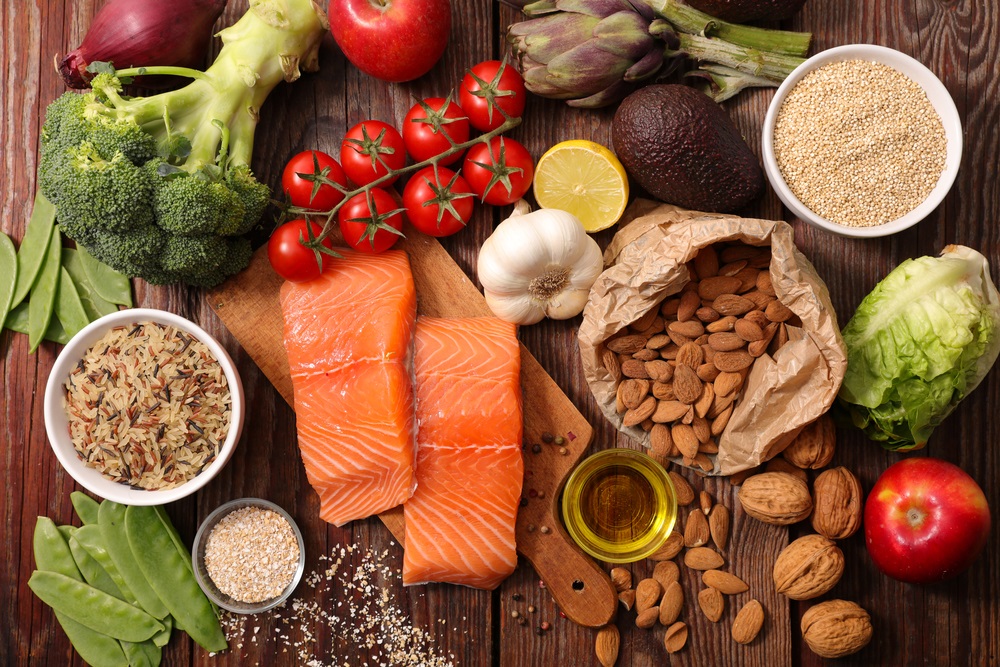
Macular Degeneration is the leading cause of irreversible blindness in the elderly, surpassing cataracts and glaucoma, despite the fact that as we age, our eyes become more vulnerable to various harmful conditions.
The deterioration of the macula and the subsequent loss of those important functions is known as age-related macular degeneration (AMD). Over ten million Americans are affected by AMD.
The good news is that a growing body of evidence suggests that eating the right foods can reduce your chances of developing AMD. Nutrition can be an effective means of extending the life of our eyes.
1. Omega-3 fatty acids
So, what are these amazing foods that can help with AMD? One category includes foods high in omega-3 fatty acids, which are thought to help the retina's photoreceptor cells. Cold, deepwater fish like salmon and sardines, as well as walnuts, Brussels sprouts, spinach, and omega-3-enriched foods like yogurt and eggs, are good sources of omega-3s.
2. A dynamic carotenoid duo
The macular region of the retina contains high concentrations of two key carotenoids, lutein, and zeaxanthin, which are thought to help the eyes by filtering out harmful, high-energy blue wavelengths of light. However, because the human body does not produce all of the lutein and zeaxanthin required for this important function, it is critical to obtain these nutrients from foods such as kale, spinach, collard greens, and turnip greens.
3. Antioxidant vitamins
Another aspect of health that can benefit from antioxidants, such as vitamins E and C, is vision. Because oxidative stress increases with age, antioxidants can protect against the harmful effects of oxidant chemical buildup.
Citrus, peppers, broccoli, and strawberries are excellent sources of vitamin C, while peanuts, hazelnuts, almonds, broccoli, spinach, safflower seeds, and fortified foods such as breakfast cereals are excellent sources of vitamin E.
4. Mighty minerals
Let's start with zinc, a mineral that aids in the delivery of vitamin A from the liver to the retina, which is required for the production of melanin—a pigment that protects the eye. It's not surprising, then, that zinc deficiency has been linked to vision problems like poor night vision and cataracts. Oysters, red meat, poultry, beans, whole grains, and some dairy products are high in zinc.
5. Your daily D
Vitamin D may improve macular degeneration. This nutrient has the potential to provide triple protection against age-related problems due to its antioxidant and anti-inflammatory properties, as well as its anti-angiogenic properties, which means it can inhibit the growth of new blood vessels involved in wet AMD.
6. Anti-inflammatory nutrients
Chronic inflammation in the retina and the vascular layer of the eye called the choroid could be the causes of AMD. Fortunately, many of these nutrients, such as lutein, zeaxanthin, omega-3 fatty acids, and vitamin D, have anti-inflammatory properties that help protect the eyes from AMD.
7. Mediterranean diet
The Mediterranean diet is a healthy eating pattern that is high in beneficial foods like vegetables, fruit, and fish and low in harmful foods like saturated fats and trans fats. Adherence to a Mediterranean diet was linked to a lower risk of progression.
8. Coffee
That cup of joe has far more health benefits than anyone imagined. Caffeine appears to be protective against macular degeneration.
Macular degeneration is less common in people who drink the equivalent of one espresso shot per day.
9. Ditch junk food
A 2001 study found that certain types of fat—vegetable, monounsaturated, and polyunsaturated fats, as well as linoleic acid—found in store-bought, highly-processed foods like margarine, cake and cookies, commercially-prepared pie, potato chips, peanut butter, and French fries, may increase the risk of developing advanced AMD.
10. Embrace a healthier lifestyle
While a healthy diet can help protect your eyes from AMD, it is only one piece of the puzzle. Other smart strategies include not smoking, exercising regularly, and maintaining normal blood pressure and cholesterol levels.

 Log in with Facebook
Log in with Facebook 






